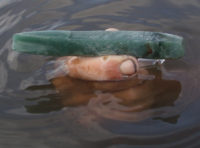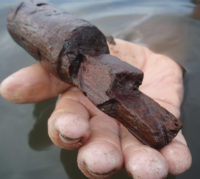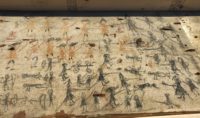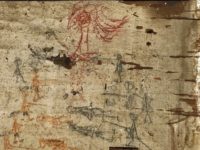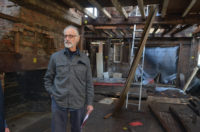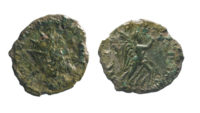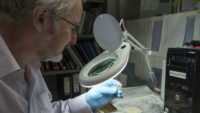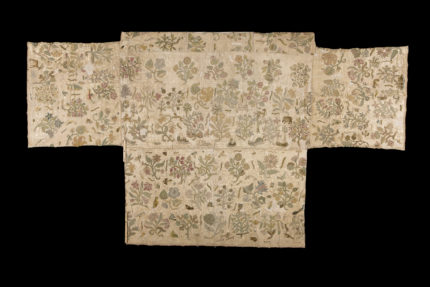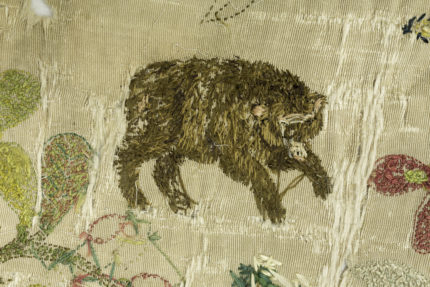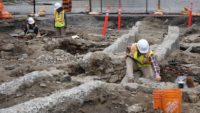 An excavation of Ottawa’s Parliament Hill in advance of redevelopment has unearthed the remains of military barracks predating the founding of city. What would become Ottawa was known as Bytown then, named after Lieutenant Colonel John By, a British military engineer charged with building the Rideau Canal to link Montreal via the Ottawa River to the Saint Lawrence at Kingston, Ontario.
An excavation of Ottawa’s Parliament Hill in advance of redevelopment has unearthed the remains of military barracks predating the founding of city. What would become Ottawa was known as Bytown then, named after Lieutenant Colonel John By, a British military engineer charged with building the Rideau Canal to link Montreal via the Ottawa River to the Saint Lawrence at Kingston, Ontario.
The mission had a military purpose. In the wake of the War of 1812, Canada feared the United States would persist in its attempts at invasion. Having a secure supply route connecting Montreal to the British naval base in Kingston instead of having to rely on the Saint Lawrence, with its treacherous rapids and section bordering New York, would provide an important tactical advantage.
Work began in 1826. It was not an easy job. The canal had to be dug out of the earth over a distance of 202 kilometers (125.5 miles). Much of the heavy work was done by contractors who employed Irish and French-Canadian labourers, but the Royal Sappers and Miners Regiment were deployed to work on the canal under By’s command. Those 150 soldiers and their wives and children had to be quartered in Bytown.
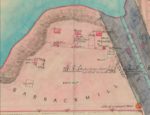 On the north side of the future Parliament Hill, three barracks, a guardhouse, stables and kitchens were built, as was Ottawa’s first jailhouse (a very petite one with just three cells). Also latrines, which of course make archaeologists rub their dirty hands together with glee.
On the north side of the future Parliament Hill, three barracks, a guardhouse, stables and kitchens were built, as was Ottawa’s first jailhouse (a very petite one with just three cells). Also latrines, which of course make archaeologists rub their dirty hands together with glee.
The items uncovered so far include a range of military items: chin straps, tags, gorgets — which officers often wore to hold their neckties in place — and other domestic items, like coins. […]
But there might be more left to uncover, in a somewhat unusual spot: the privies.
“It’s an excellent place to dispose of things,” said [excavation project manager Stephen] Jarrett. […]
With no modern-day plumbing, it doesn’t take much to imagine the odour.
“You need to keep the smell down from the human waste, and so you put fill layers on top in order to keep the smell down,” Jarrett said.
“So that comes with all the broken dishes and anything else that can help keep that smell down.”
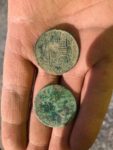 The canal was completed in 1832. It was a remarkable feat of engineering but it never was used for military purposes. By the time it was done, the prospect of a US invasion was no longer a concern. The barracks remained on the hill for another 25 years. Ottawa was founded in 1855. In 1858 it was declared the capital of the newly-established United Province of Canada. The old Bytown barracks were demolished to make way for the parliament buildings of the new capital.
The canal was completed in 1832. It was a remarkable feat of engineering but it never was used for military purposes. By the time it was done, the prospect of a US invasion was no longer a concern. The barracks remained on the hill for another 25 years. Ottawa was founded in 1855. In 1858 it was declared the capital of the newly-established United Province of Canada. The old Bytown barracks were demolished to make way for the parliament buildings of the new capital.
 The excavation will continue until the fall. All recovered artifacts will be cleaned and conserved by Public Services and Procurement Canada experts. Once they are stabilized, the objects will be placed on public display
The excavation will continue until the fall. All recovered artifacts will be cleaned and conserved by Public Services and Procurement Canada experts. Once they are stabilized, the objects will be placed on public display
